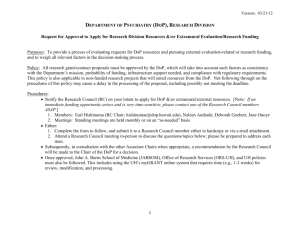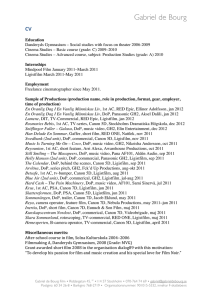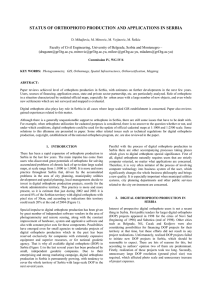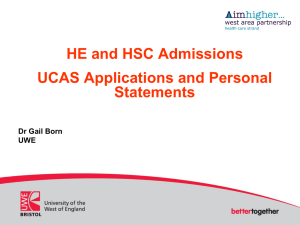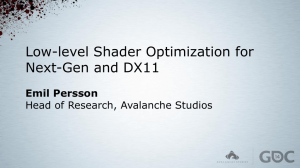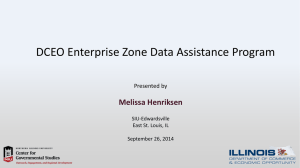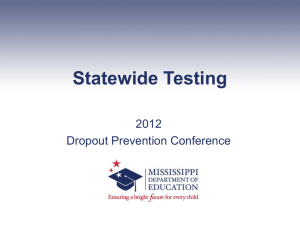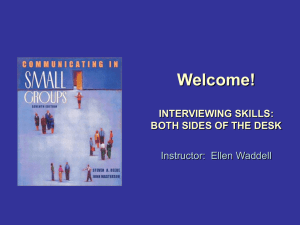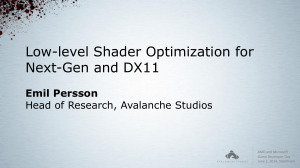How to get an F32 NIH Grant by Brian Harfe
advertisement
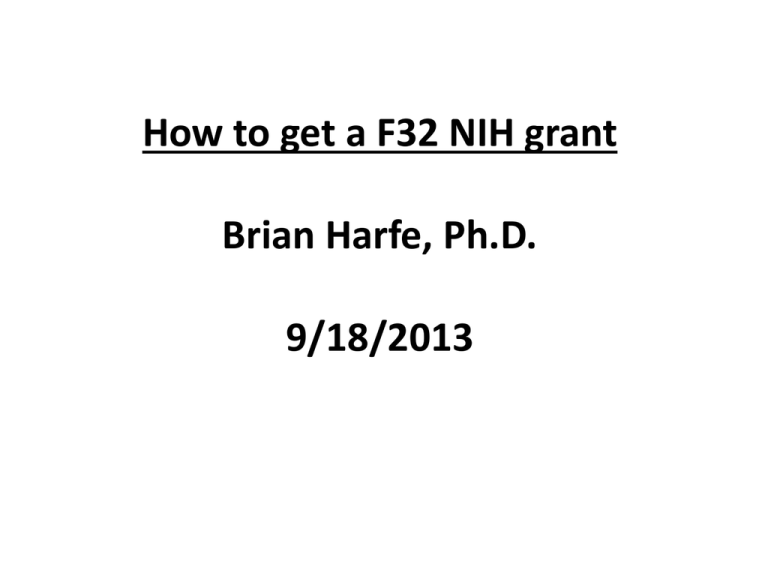
How to get a F32 NIH grant Brian Harfe, Ph.D. 9/18/2013 Outline (the dreaded “learning objectives”) 1. Learn who I am 2. Understand what a F32 grant is 3. Figure out how to get one 4. See the funding rates Who I am Brian Harfe, Ph.D. Associate Professor, College of Medicine (10 years) Associate Dean, College of Liberal Arts and Sciences (4 months) Director of the Program in Developmental Genetics (5 years) Email: bharfe@ufl.edu Web (Liberal Arts): http://www.clas.ufl.edu/dean/assocdeans/harfe.html Web (Medicine): http://mgm.ufl.edu/faculty/faculty-home-pages/harfebrian/ Brief history in time: BSc Glasgow University, Scotland Ph.D. The Johns Hopkins University (Carnegie Inst. – C. elegans) Postdoc #1 Emory University (2.5 years - yeast) Postdoc #2 Harvard Medical School (3 years, F32 NRSA grant – mice and chicks) Why am I here? I review F32 NIH grants for NIH (Cell Biology and Development Fellowship study section) 3/2012, 6/2012, 11/2012, 3/2013, 7/2013 (11/2013) - I have reviewed ~80 applications in the last year and a half Also looked over a couple of colleagues applications at UF Takes me ~2-3 hours/application to review Yes, you get paid (approximately $400, which equals around $13.00/hour) What they are and why they are good 1. The Ruth L. Kirschstein National Research Service Awards (NRSA/F32) for Individual Postdoctoral Fellowships provides up to three years of support for promising postdoctorals who have the potential to become productive, independent investigators within the broad scope of biomedical, behavioral, or clinical research. 2. Postdoctoral fellowship awards provide a stipend (based on the level of experience), tuition and fees if specific courses are required, and an institutional allowance. 3. Shows you can get a grant (very important for next job). Allows you to work in a lab. Rules 1. Applicant must identify a sponsoring institution and an individual who will serve as a sponsor (mentor or supervisor) and who will supervise the training and research experience 2. Individual must have received the Ph.D. (or equivalent research degree), or a professional degree such as the M.D., D.V.M., etc 3. Must be citizens or noncitizen nationals of the United States, or must have been lawfully admitted to the United States for Permanent Residence. How to get one funded (i.e. how are they scored) 1. All reviewers use the same NIH scoring sheet 2. NOT ALL CRITERIA ARE WIGHTED EQUALLY! 3. 1-9 scale is used with 1 being the best (only whole numbers can be given) 4. Each area of application is scored separately. 5. One “Overall Score” provided for each application. Score DOES NOT represent an average of all the criteria scores. The Scoring Sheet Application #: Applicant: OVERALL IMPACT Reviewers will provide an overall impact score to reflect their assessment of the likelihood that the fellowship will enhance the candidate’s potential for, and commitment to, a productive independent scientific research career in a health-related field, in consideration of the following scored and additional review criteria. An application does not need to be strong in all categories to be judged likely to have a major impact. Overall Impact/Merit Write a paragraph summarizing the factors that informed your Overall Impact score. - PUBLICATIONS! - Where applicant has trained previously. Grades, letters of support. Real life examples: BAD: - Letters are very brief. Although they are strong it seems like the people writing the letters do not know the applicant very well (4). - Single first author publication (in G3) and one middle author paper (in Protein Science). Addition of at least one more publication would greatly strengthen the application (5). - One of the letters addresses the issue of a single publication but also states that another excellent paper is forthcoming. Publication of this paper would strengthen the proposal (6) GOOD: - Seven papers published (another three are in various stages of revision). These include three first author papers (2). - Strong letters of support (2). - Outstanding grades from XXXX (undergrad) and XXXX(Grad school) (2). - Two first author publications (Biochemistry and Nature Chemical Biology) along with five middle-author papers and two reviews. Excellent publication record (1). - The Applicant has a nice blend of academic and industry experience (1). - Funding MUST be in place to run lab during proposed project. - Proven track record of mentoring Real life examples: BAD: - Has NSF grant through 2015 for 2 million and is PI on the proposal but there are four co-PIs. Unclear how much money is available to support the applicant (5). GOOD: - If funding falls through, the Department Chair states that the department will provide funds to complete “his” research (however, the applicant is female) (3). - Outstanding mentoring plan (2). - Sponsor has an outstanding track record of mentoring students. Has won the XXX Postdoctoral Mentoring Award as well the “Dean’s Award in Mentoring of Graduate Students” (1) - HHMI Investigator with extensive funding through HHMI and a new R01 (1). - not as important as you would think. Training Potential in Applicant sections can overcome weak Research Plan. - Something that can be done in three years. Something that is different than what applicant has done before. Will advance the field (i.e. exciting). NO Preliminary data needed. Real life examples: BAD: - The proposal appears to be an analysis of this channel family in the presence/absence of different inhibitors and/or when the linker region is removed. It is not innovative (6). - The order of the applicant is weird. It is a bit confusing to have the Preliminary Studies come last (4). - A number of controls have been left out including RNAi controls (4). GOOD: - The proposal is outstanding. It contains a new and exciting Aim 2, which complements Aim 1. The overall project is very focused on the role of Wnts in producing/inhibiting iPS (2). - The proposal is well written and flows very nicely from Aim 1 to Aim 2 (2). - Experiments appear to have a good chance of working but at the same time are innovative (3). - Excellent description of alternative plans is included. - Will you learn something NEW that will help you get a job? Real life examples: BAD: - The application will have worked on the organism as an undergraduate, Ph.D. (same lab as undergrad work) and postdoc (7). - After the three year funding period the applicant would have spent 9-plus years working on the same gene in the same organism. She will have obtained a very limited set of skills and knowledge base (8). - Training potential is extremely limited since the goal is to learn a single technique during the three year funding period (8). - Additional details on exactly what courses/workshops the applicant will be taking would strengthen the application (4). GOOD: - Applicant’s background is in protein folding and yeast transcription. The Applicant states that she would like to run a lab investigating metazoan signaling networks. The environment she has chosen is an excellent place to achieve this goal (2) - A detailed plan is in place to ensure that the Applicant meets her goals and is trained to become an independent investigator and thinker (2). - Weakness that the Applicant currently has will be addressed. These include designed long-term experimental goals and writing proposals (1). - Applicant will learn a number of new techniques including live cell imaging that will greatly broaden her training (1) - Least important - Every place is great Real life examples: BAD: GOOD: - The research environment at XXX University is outstanding. - The facilities for the proposed project are outstanding. How does this all work? 1. Each Application reviewed by three people (Assigned as Reviewer 1, 2 or 3) 2. Submit your review with all scores a few weeks before meeting 3. “Overall” score is averaged (three numbers) 4. Applications are then ranked 5. Top ~50% are “discussed” at study section (generates a “Summary of Discussion” paragraph). 6. Primary Reviewer gives summary of application. Comments are then added by Reviewers 2 and 3 and then open to panned discussion. 7. EVERYONE then votes an “Overall” score. 8. Score from all people on study section (not just people who reviewed application) are averaged to arrive at final score used to rank the application (usually ~15 people for F grant reviews). Funding rates differ depending on the NIH Institution 2012 2012 2012 2012 2012 2012 2012 2012 2012 2012 2012 2012 2012 2012 2012 2012 2012 2012 2012 2012 2012 F32 NCCAM 9 4 44.4% $249,747 F32 NCI 232 42 18.1% $2,087,900 F32 NEI 73 24 32.9% $1,252,192 F32 NHGRI 7 3 42.9% $145,326 F32 NHLBI 198 42 21.2% $2,200,948 F32 NIA 69 14 20.3% $723,041 F32 NIAAA 29 15 51.7% $760,198 F32 NIAID 240 47 19.6% $2,432,503 F32 NIAMS 86 19 22.1% $1,001,308 F32 NIBIB 34 10 29.4% $459,001 F32 NICHD 119 25 21.0% $1,287,638 F32 NIDA 59 16 27.1% $806,036 F32 NIDCD 52 13 25.0% $673,683 F32 NIDCR 20 7 35.0% $397,702 F32 NIDDK 165 60 36.4% $3,190,158 F32 NIEHS 34 9 26.5% $496,146 F32 NIGMS 504 153 30.4% $7,642,911 F32 NIMH 125 27 21.6% $1,339,307 F32 NINDS 219 58 26.5% $2,980,964 F32 NINR 10 2 20.0% $102,928 F32 Total 2,284 590 25.8% $30,229,637 25.8% funding rate across NIH F32 Success Rate by Degree 2012 MD 112 20 17.9% 2012 PhD 1,489 421 28.3% 2012 MD-PhD 23 9 39.1% 2012 Other 660 140 21.2% 2012 TOTAL 2,284 590 25.8% *can resubmit application one time
